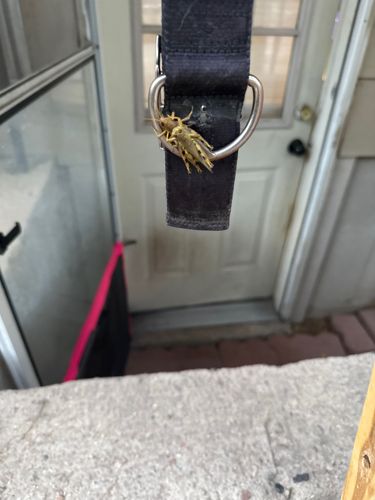Grasshopper
Scientific Name: Though specific species identification isn't possible from the image, common genera include Melanoplus, Schistocerca, and Locusta (for locusts).
Order & Family: Order: Orthoptera, Family: Acrididae (short-horned grasshoppers) or Tettigoniidae (long-horned grasshoppers/katydids). Based on the image, it's likely Acrididae.
Size: Typically range from 1 to 7 cm (0.4 to 2.8 inches) in length, depending on the species.

Natural Habitat
Found in various habitats worldwide, including grasslands, meadows, agricultural fields, gardens, and open woodlands. They prefer areas with abundant vegetation for feeding and shelter.
Diet & Feeding
Herbivorous; they primarily feed on a wide variety of grasses, leaves, and other plant matter. Some species may also consume seeds or flowers.
Behavior Patterns
Grasshoppers are primarily diurnal and are well-known for their jumping ability, which is used to escape predators. They also use chirping sounds (stridulation) for communication, especially during courtship. Nymphs hatch from eggs laid in the ground, and undergo several molts before reaching adulthood.
Risks & Benefits
Risks: Can be significant agricultural pests, especially in large swarms, causing extensive damage to crops and vegetation. Benefits: Serve as an important food source for various animals (birds, reptiles, small mammals) and play a role in nutrient cycling in ecosystems.
Identified on: 8/11/2025